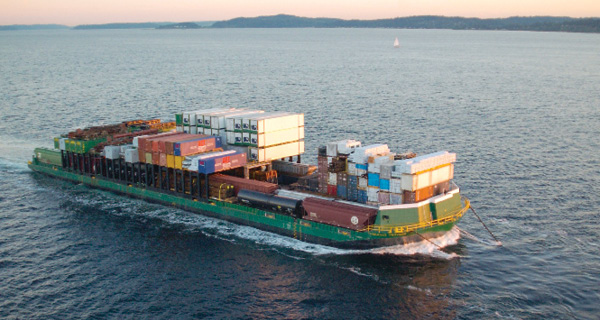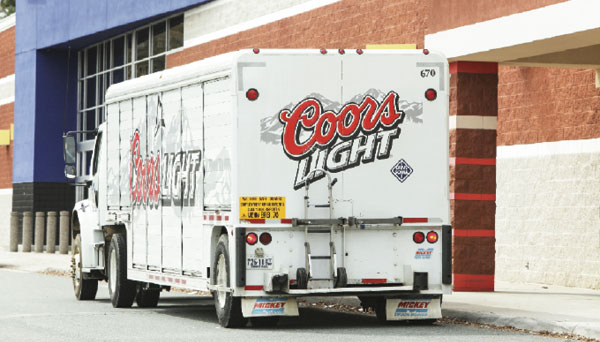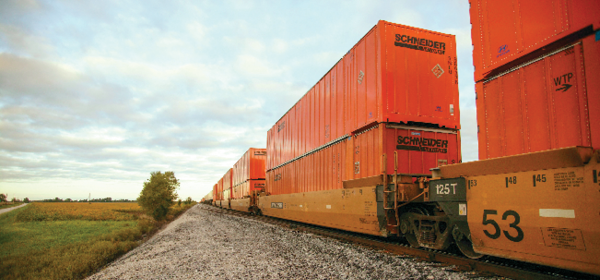Articles
Trucking

SaaS TMS Facilitates Carrier Management
Q: How can shippers navigate today’s tight capacity market? A: For companies to have the assurance of consistent, competitively priced, service-oriented capacity through the ups and downs of the transportation marketplace, being a shipper of choice is imperative. Here are a few tips to get started: Go beyond rates. Best practice suggests taking a multi-tiered […]
Read More
TMS: Getting in on the Ground Floor
TAJ Flooring’s new transportation management system lays the foundation for improved logistics and customer service.
Read More
Innovation in Business Processes from Northwest Arkansas
Northwest Arkansas is a hotbed for innovations in supply chain management, the effects of which span the globe. Although some argue that various aspects of these innovations started elsewhere, they have, at the very least, been perfected and rolled out broadly in Northwest Arkansas. Though these innovations have been in areas of data science and […]
Read More
What Transportation Providers Gain From an Integrated TMS Platform
Transportation service providers with trucking assets have an edge with customers. Compared to their non-asset counterparts, they can directly control the equipment, drivers and facilities to ensure capacity and customer service, keeping commitments and adapting quickly to market change. Keeping pace with the demands of the marketplace has become increasingly complex, however. Few carriers operate […]
Read More
Trends—May 2014
TOTO Plumbs the Benefits of Green To gain favor among ethically conscious customers, retailers and manufacturers continue to put a marketing spin on sustainability. Greenwashing has many shades. Often it surfaces in buzzwords such as eco-friendly and recycled. Sometimes it reveals itself as trust in a brand, or the type of ingredients found in a […]
Read More
Plan Better Truck Routes: Long-range Itinerary Generation Enhances Operations
Not so long ago, route planning, fleet optimization, and driver allocation relied almost exclusively on the guile, instincts, and experience of operations managers and dispatch personnel. Long-range forecasting was theoretical at best. The tools used static data, and couldn’t handle the inevitable adjustments required by the dynamics of day-to-day operations. This is changing fast. While […]
Read More
Heading North: Navigating Alaska’s Supply Chain
The road to success in the Last Frontier is paved with logistics demands and challenges.
Read More
A Strategic Approach to Strengthening Supply Chains
Q: What is a leveraged platform? A: A leveraged platform means a logistics service provider employs the same best practices to manage its own supply chain needs as it does for its client base. Benefits to shippers include mode optimization and greater usage of co-load products, as well as intermodal conversion from truckload (TL), or […]
Read More
How the Changing Chassis Market Affects Your Supply Chain
The change in marine chassis provisioning continues to be of concern to maritime shippers, thanks to a long-term trend of separating ocean transportation from inland logistics. That trend began in the mid-2000s, when carriers limited the inland destinations they would serve. As ocean carriers are disintermediated from the market, chassis users and providers will develop […]
Read More
Drafting a New Route Planning System
Molson Coors Canada’s new delivery planning system taps routing, pallet building, and truck loading functionality to optimize shipment flow.
Read More
Transportation Planning – A Manual Headache Or an Optimized Dream
Fluctuating fuel prices, Hours of Service rules, and other factors make optimized routing and scheduling vital.
Read More
Brokers Are Commoditizing LTL Carriers… And That’s a Good Thing
Much discussion in the transportation industry centers around how less-than-truckload (LTL) resellers, or brokers, are commoditizing the LTL carrier marketplace. While carriers don’t claim that brokers are packaging up their contracts and listing them on the Chicago Board of Trade to be exchanged like pork belly futures contracts, some do believe resellers are stripping the […]
Read More
163 Ways to Supercharge Your Supply Chain
Supply chain gone stale? Inbound Logistics compiled these actionable tips to help revitalize your warehousing, 3PL, trucking, and global logistics operations.
Read MoreBuilding a Core Carrier Program
When developing a base of reliable core motor carriers, customer service and on-time success typically drive the selection process. But don’t overlook factors such as company stability and labor quality. Streamline your carrier program to a select few using the following tips. 1. Look beyond cost. When selecting partners, don’t focus solely on cost-cutting strategies. […]
Read More
Trends—January 2014
Getting Demand Forecasting in Hand In the demand-driven logistics domain, forecasting is king. Companies that are best able to predict sputters and spikes, then react and execute against those signals, will gain a competitive advantage. But given today’s market uncertainty—the economy, consumer purchasing power and appetite for new products, sliding holiday seasonality, and emerging omni-channel […]
Read More
Transforming Liquid Assets into Capital Gains
Q: What is the current state of the bulk liquid transportation market? A: Over the past several years, the only viable option for bulk liquid transport has been specially designed tank trucks. These trucks are expensive to produce and maintain, and their quantity is limited. A single truck can only carry a specific type of […]
Read More
Time-Critical Transport: Devising a Master Plan
Time-critical shipping doesn’t have to be expensive, inefficient, or wasteful—as long as it’s all part of the plan.
Read More
How to Manage Hours-of-Service Regulations Compliance
Now that the Federal Motor Carrier Safety Administration’s Hours-of-Service (HOS) rules have entered into force, trucking companies and shippers need to account for these regulatory changes. Any company that is working in a fast-paced, time-definite shipping environment is especially vulnerable. The new HOS regulations feature two key provisions: Limitations on minimum “34-hour restarts.” Where previously […]
Read More
Intermodal Efficiencies
How shippers save money without sacrificing service by letting railroads handle the long hauls.
Read More
All Aboard a Modal Conversion
Intermodal is crossing over. In August 2013, U.S. domestic traffic averaged 257,795 units per week, the highest weekly average ever recorded, according to the Association of American Railroads. All indications suggest intermodal growth will continue to roll. As over-the-road shippers embrace the efficiency, economy, and sustainability of shifting truck shipments to rail, a conversion is […]
Read More